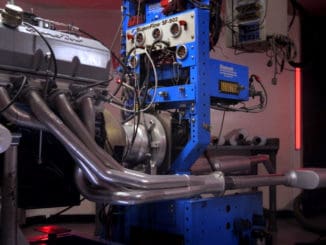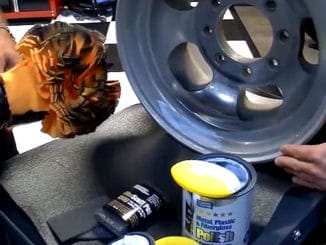
Aftermarket connecting rods come in various designs, materials, and lengths, and picking the right combo will come down to five key factors:
- Engine performance or output — as in horsepower, torque and RPM range
- Engine dimensions including piston height, crankshaft stroke
- Application — street, drag race, endurance racing, etc.
- Piston weight
- Budget
All of these factors will help determine connecting rod length, material and overall configuration that best fits your application.
Physical Design of Connecting Rods
Stock I-beam connecting rods can handle upward of 400 horsepower and 6,500 rpm.
Once you exceed those performance levels, you’ll need to consider aftermarket connecting rods. Depending on the type of material used, aftermarket I-beams can handle hefty compressive loads, offer good tensile strength, and are often more lightweight than H-beam connecting rods.
H-beam connecting rods use a completely different design to increase stiffness and strength. They incorporate two large, flat sides with a thin section in the middle.
This design makes these rods more rigid and able to handle compression forces; however, they are often more expensive.
I-beam rods are easier to produce and can sometimes be lighter than H-beams. All other variables being equal, H-beam rods are the strongest design.
The three main materials used on connecting rods are:
- steel,
- aluminum or
- titanium.
Aftermarket Forged Steel Connecting Rods
Most aftermarket steel connecting rods are made from forged steel. However, there are different types of forged steel based on the grade of material.
Eagle Specialties, for example, uses a 5140 steel for its entry-level rods. For more highly modified competition applications, most manufacturers, including Eagle Specialties, utilize high-carbon 4340 or 4330 steel.
Aftermarket Aluminum Connecting Rods
Aluminum rods can be as much as 25-percent lighter than steel rods, making them a popular choice with racers. The lighter weight reduces the overall mass of the reciprocating assembly, allowing the engine to rev faster and higher. The downside to aluminum rods is their fatigue life.
Aftermarket Titanium Connecting Rods
Titanium is a third option. Titanium connecting rods combine the lighter weight of aluminum with strength that’s more comparable to steel. That makes them a viable option for drag cars or sprint cars that require quick throttle response. However, they are very expensive.
How To Determine Connecting Rod Length and Ratio
No talk about connecting rods is complete without discussing how to determine connecting rod length and connecting rod ratio.
Those topics and more are covered in this quick tech short from Summit Racing…
Get your pistons pumping with tough, top-quality connecting rods from Summit Racing — They carry the very best brands — Eagle Specialty, Carrillo, Callies Performance, Crower, SCAT, Lunati, Manley, and many others.
Their huge selection includes steel and alloy connecting rods for street and mildly modified applications and a variety of forged steel rods for highly modified street and race vehicles.
Choose from I-beam, H-beam, and A-beam configurations with floating and press-fit wrist pins.
Summit Racing gives you more choices for a broader array of engines than anyone else — Shop Now (non-affiliate links provided for your convenience).




